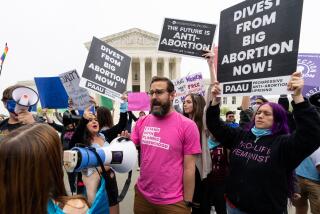What lies ahead following Oklahoma opioid judgment

- Share via
and opioids came to be seen as part of the solution.
Q: So what’s the problem?
A: Recent studies have questioned their effectiveness with chronic pain and the U.S. Centers for Disease Control and Prevention has told prescribers to be cautious about using the powerful drugs to treat patients with long-term pain. Experts say the longer patients are on the drugs and the higher the doses they receive, the more likely they are to develop addictions. Also, more people with prescriptions means more access to the drugs for recreational users and addicts.
Q: What happened leading up to the Oklahoma judgment?
Oklahoma’s public nuisance lawsuit against several drugmakers and their subsidiaries was the first in the wave of opioid litigation to make it to trial. Before the start of the six-week trial in May, Oklahoma reached a $270 million deal with Purdue Pharma , the maker of OxyContin, and an $85 million settlement with Teva , both of which faced criticism from state lawmakers, who argued they have control over dispersing funds. The Purdue settlement calls for about $200 million to go into a trust to fund an addiction studies center at Oklahoma State University in Tulsa.
The remaining defendants, Johnson & Johnson and some of its subsidiaries, proceeded to trial.
Q: What makes the cases legally complicated?
A: There are dozens of defendants and thousands of plaintiffs with different interests. State and local governments are battling over control of any settlement money before any national deals have been reached.
In Oklahoma, the U.S. Centers for Medicare and Medicaid Services has told the state that the federal government is entitled to a portion of Oklahoma’s proceeds from its settlement with Purdue. Several local governments refused to participate in the lawsuit against Purdue so they could pursue their own, while others have criticized how most of the settlement money from that case is being spent.
Q: When did the opioid crisis begin?
A: By the early 2000s, the death toll from opioids was rising and there were growing numbers of thefts of drugs from pharmacies. In 2007, Purdue paid a $634 million fine and pleaded guilty to understanding the addiction risks of the drug. But the crisis only deepened after that. Prescriptions flowed freely at “pill mill” clinics, especially in Florida, where drug dealers would get drugs and spread them around the country.
Q: How widespread is the problem?
A: In recent years, opioid overdoses have been the nation’s largest cause of accidental deaths, ahead of even automobile accidents. The death tolls per capita have been the highest in places with the highest prescription rates. The Appalachian region has been hardest hit.
Q: Have prescriptions stopped being given out so freely?
A: Yes. States have used databases to track prescriptions and prescribers, pill mills have been shut down and prescribers have become more conservative in calling for the drugs since around 2011. Government guidelines and some insurance company standards have also been tightened. But as prescription rates started falling, death rates actually rose, with more addicts using deadlier illicit versions of opioids. Preliminary data shows that the death toll declined very slightly in 2018 for the first time since the crisis began.
Q: What’s next?
A: The first federal trial, involving claims from Ohio’s Cuyahoga and Summit counties, is scheduled for Oct. 21. The Cleveland-based judge in that case, Dan Polster, intends to use that as a bellwether, providing decisions that could apply to other cases. Polster is overseeing most of the opioid cases and is pushing the parties to settle.
Other cases in state and federal courts could be tried as soon as next year.
___
Follow Mulvihill at http://www.twitter.com/geoffmulvihill
More to Read
Sign up for Essential California
The most important California stories and recommendations in your inbox every morning.
You may occasionally receive promotional content from the Los Angeles Times.










